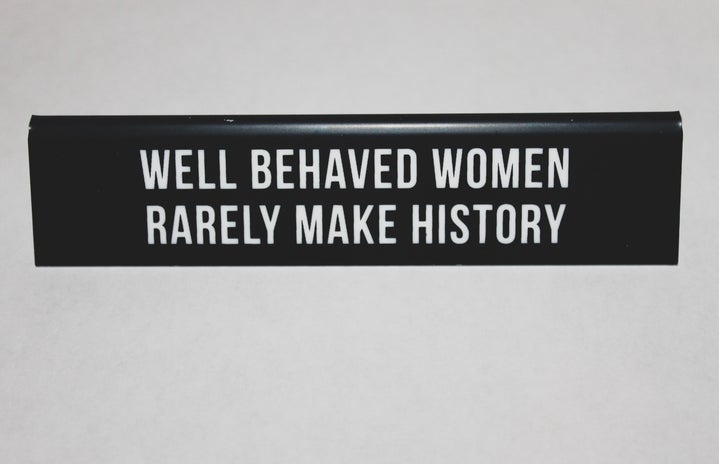Earlier in the month, I read an article by Tim Gunn of The Washington Post that caught my attention. It discusses retailers’ reluctance to sell to plus size women.
This is a topic that has been talked about many times before. Designers make clothes for women with a certain body type, indirectly (or directly) setting the standard of what body type is considered beautiful or acceptable. Designers in the past have also expressed their distaste about marketing toward plus size women. As Tim Gunn stated in his article, Karl Lagerfeld who is the head designer of Chanel is quoted to have said, “No one wants to see curvy women.” And before he had to step down in 2014, Chief Executive Mike Jeffries of Abercrombie and Fitch explained his clothes were meant for “cool, good-looking people” and “we’re going after the attractive-all American kid.”
Then I thought, how do these retailers market toward men? Do they have the same reluctance in marketing toward men of a particular stature? I wondered if there were any differences with the sizes of men clothing compared to women’s. If there is, what does that tell us about the fashion industry? So I did a little research by visiting the websites of retailers specifically known for their apparel such as Abercrombie and Fitch, American Eagle Outfitters, Express, and Calvin Klein. What I observed in directly from these companies’ websites, so experiences looking for clothes online opposed to going to the store in person can affect availability of sizes.
I would like to say before I explain any further that NONE of these brands have a plus-size section designated to any bigger size at all. The largest size offered is XXXL, and it is only offered in a few styles by one of the four retailers I listed above.
First, I’ll start off with Abercrombie and Fitch. This hasn’t been the first time the brand has been in the middle of controversy involving size, with the former head designer being inherently shallow and biased, and also with the company only deciding to add bigger sizes to their online store in 2014.
According to their website’s size chart, men’s tops are offered in six different sizes from a XS to XXL: shirts, sweaters, hoodies are offered in all of these sizes (if in stock). For women, the size selection varies. XXS is the smallest size while XL is the largest a top will be offered. However, not all of the tops come in the six sizes. Most of the tops are only offered in extra small, small, medium, and large. Men’s bottoms are offered in ten waist sizes at five different lengths, totaling 50 different selections in sizes. Women’s jeans are offered in ten sizes but in only three different lengths, making the selection for women’s jeans 20 less than for men.
American Eagle Outfitters may be one of the better retailers of the four to accommodate men and women of different sizes. AEO offers men shirts in at least nine different sizes and eleven sizes maximum, not only ranging from XXS to XXXL, but also including medium-tall, large-tall, and extra-large-tall. Not all styles in men’s top include XXS or XXXL. Women’s tops are offered in seven sizes from XXS-XXL. There are 44 selections for men’s jeans to 48 combinations for women’s jeans plus five rise lengths.
Similar to AEO, Express also has men’s tops from XS-XXL. They also offer all of these sizes in tall, totaling 12 sizes for men, while women’s offer at the most 8 different sizes.
Lastly, we will look at Calvin Klein, which is a company that was also in the middle of some controversy back in late 2014 when they featured Myla Dalbesio, who is a size 10, in a plus size ad. Calvin Klein offers men’s tops in sizes XS-XXL, and women’s tops in XS-XL. In the case of Calvin Klein, however, only their casual tops are offered in all sizes, while dress tops and blouses are only offered in sizes S-XL for men and XS-L for women. Women’s jeans run from size 0-14. The size chart for men’s jeans on the website is vague, but majority of men’s jeans run from 29Wx32L- 40Wx32L, one more size then then women’s bottoms.
To sum it all up, these fashion retailers seem to have more of a variety sizes when it comes to men than for women. It also seems as if they are more accommodating of men of different body types while they are telling women “you have to look like this if you want to wear these clothes.” Why is that? Maybe because men are generally bigger than women? If that were the case, it wouldn’t make sense to sell XXS and XS in men’s departments. Or, it could be because head designers and CEO’s of many of these fashion retailers are men themselves.
Whatever the case may be, it might be a good time for these retailers to think about expanding their market audience, especially if plus-size women in America are spending $20.4 billion a year (according to Tim Gunn in the aforementioned article). The industry’s stubbornness could also be one of the reasons why retailers similar to the ones I’ve mentioned have been short on sales, losing shoppers to retailers such as Forever 21, H&M and department store retailers. The other reason could also be due to the price differentials.
There are still many retailers that do convenience men and women of different sizes, women at times having more of a size selection than men. Hopefully in the future, fashion designers broaden their horizons and find more reasonable ways to share their visions for men and women of all sizes.


